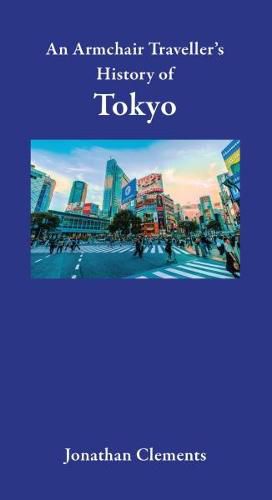Readings Newsletter
Become a Readings Member to make your shopping experience even easier.
Sign in or sign up for free!
You’re not far away from qualifying for FREE standard shipping within Australia
You’ve qualified for FREE standard shipping within Australia
The cart is loading…






With almost 13 million residents, Tokyo is now as much an icon of modernity as it is a city, with its neon-lit billboards, futuristic technology, and avant-garde fashion scene. But the long and fascinating history of Japan’s modern capital encompasses much, much more, and in An Armchair Traveller’s History of Tokyo, Jonathan Clements sketches the city’s amazing trajectory from its humble beginnings as a group of clearings in a forest on the Kanto plain all the way to its upcoming role as host of the 2020 Olympic Games.
Tokyo, meaning Eastern Capital, has only enjoyed that name and status for 150 years. Before that, it was a medieval outpost designed to keep watch over rich farmlands. But this seemingly unassuming geographical location ultimately led to its status as a supercity. Though the imperial court ruled Japan from the sleepy city of Kyoto, the landowners of the Kanto plain where Tokyo lies held the true wealth and power in Japan, which they eventually asserted in a series of bloody civil wars. The Tokyo region became the administrative center of Japan’s Shogun overlords and the site of a vibrant urban culture home to theaters, taverns, and brothels. After the Meiji Restoration in 1868, it became Japan’s true capital, home to the emperors, the seat of government, and a site of rapid urban growth.
Anyone who’s ever longed to look upon Mount Fuji, embody the bravery of the Samurai, or savor the world’s finest sushi will find themselves transported from the comfort of their armchair while reading Clements’s account of Tokyo.
$9.00 standard shipping within Australia
FREE standard shipping within Australia for orders over $100.00
Express & International shipping calculated at checkout
With almost 13 million residents, Tokyo is now as much an icon of modernity as it is a city, with its neon-lit billboards, futuristic technology, and avant-garde fashion scene. But the long and fascinating history of Japan’s modern capital encompasses much, much more, and in An Armchair Traveller’s History of Tokyo, Jonathan Clements sketches the city’s amazing trajectory from its humble beginnings as a group of clearings in a forest on the Kanto plain all the way to its upcoming role as host of the 2020 Olympic Games.
Tokyo, meaning Eastern Capital, has only enjoyed that name and status for 150 years. Before that, it was a medieval outpost designed to keep watch over rich farmlands. But this seemingly unassuming geographical location ultimately led to its status as a supercity. Though the imperial court ruled Japan from the sleepy city of Kyoto, the landowners of the Kanto plain where Tokyo lies held the true wealth and power in Japan, which they eventually asserted in a series of bloody civil wars. The Tokyo region became the administrative center of Japan’s Shogun overlords and the site of a vibrant urban culture home to theaters, taverns, and brothels. After the Meiji Restoration in 1868, it became Japan’s true capital, home to the emperors, the seat of government, and a site of rapid urban growth.
Anyone who’s ever longed to look upon Mount Fuji, embody the bravery of the Samurai, or savor the world’s finest sushi will find themselves transported from the comfort of their armchair while reading Clements’s account of Tokyo.